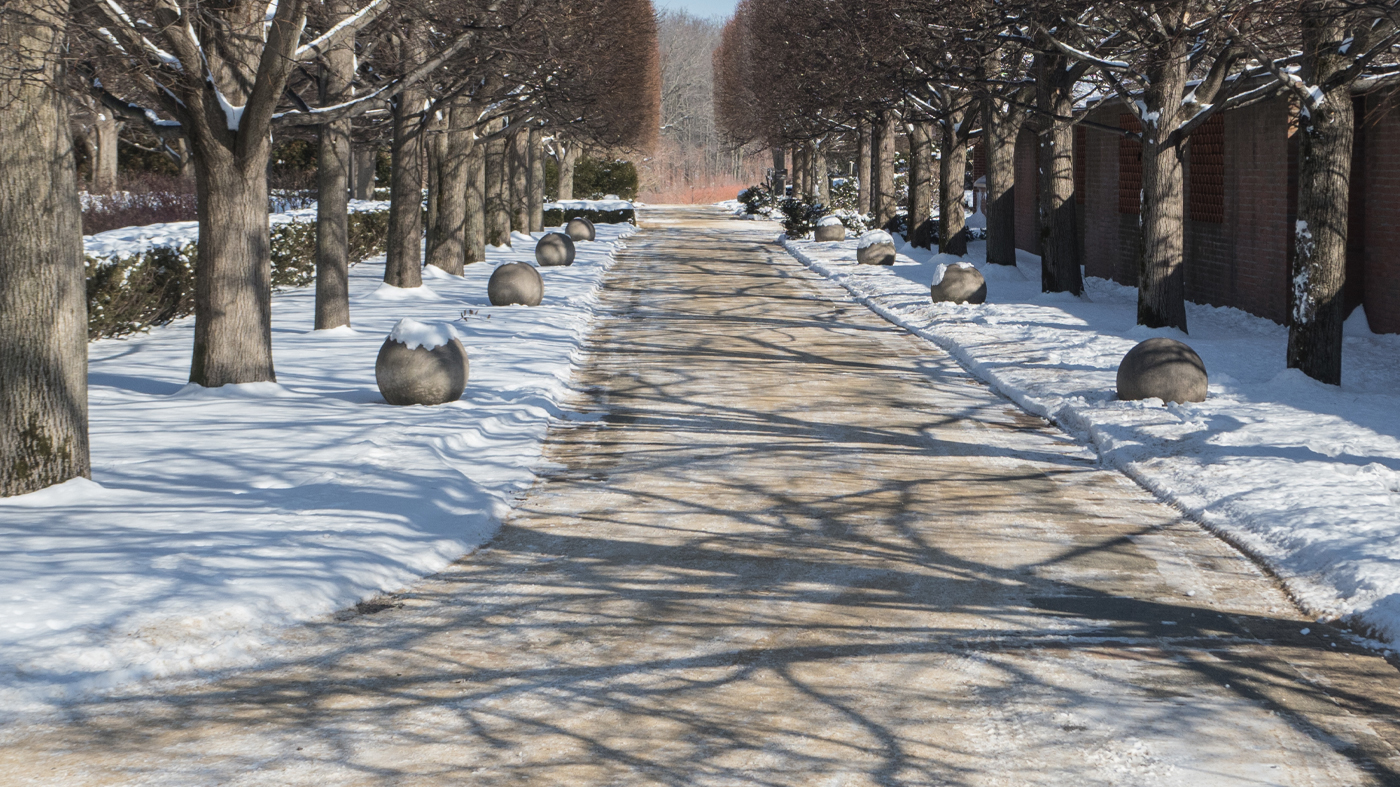

Tips & Techniques
Dealing with Snow in the Garden
When ice and snow season arrives, it's important that roads, driveways, and sidewalks are safe to walk and drive on, so life doesn't become more challenging than it already is. While personal safety is the primary concern, many homeowners are adopting snow-management practices that also protect their plants and the environment.

Pass (by) the Salt
Products commonly used to deal with snow and ice include rock salt and products made with sodium chloride, the type of salt used to season food. While generally effective, these products can cause serious landscape problems when salt-laden sprays coat evergreen or deciduous plants, or even turfgrass. The salty layer extracts moisture from plant tissue, which can cause serious, sometimes fatal problems.
Salt-based deicing products can also accumulate in soil, which in turn can cause salt-sensitive plants to decline or die. Salt levels build when salt-laden snow is shoveled or blown onto plants, and when poor drainage or runoff causes soil concentrations to reach levels that are toxic to plants.
Even when small amounts of salt-based deicing products are used, some sodium can leach into waterways and contaminate drinking water and harm aquatic plant and animal life.
Read the Label
All deicing products have advantages and disadvantages. No matter which product best meets your needs, carefully follow label instructions to make sure it is used effectively at the lowest rate possible.
Calcium magnesium acetate (CMA) is generally considered the best deicer for plants and from an environmental standpoint. But since high concentrations can reduce oxygen levels in waterways, use it carefully for managing snow on roads and bridges near waterways. Effective to temperatures as low as 15 degrees Fahrenheit, CMA makes surfaces easier to shovel because they remain slushy (though still possibly slippery).
Calcium chloride, which works when temperatures are as low as minus 20 degrees, is less damaging to plants than products made with sodium chloride (rock salt), but is similarly harmful to carpet, tile, and shoes, and it is corrosive to concrete and metal. A similar product, potassium chloride, is also less damaging to plants and works until temperatures drop below 15 degrees.
Ounce of Prevention
Don't wait until there is ice or snow on the ground to take steps that will make problems less likely to occur. People living along major roads that are salted during winter can construct barriers that protect plants from salt-laden spray. Snow fences or burlap make effective seasonal barriers. For some, a screen of salt-tolerant plants is a more aesthetically pleasing option that needs to be installed only once.
Salt-tolerant trees for our area include Northern catalpa (Catalpa speciosa), honey locust (Gleditsia triancanthos), Kentucky coffee tree (Gymnocladus dioicus), and blue spruce (Picea pungens). Shrubs that also tolerate salty spray and soil include forsythia (Forsythia spp.), mugo pine (Pinus mugo), sumac (Sumac spp.), and Miss Kim lilac (Syringa patula 'Miss Kim').
But just because a plant is salt-tolerant doesn't mean it is immune to all salt-related problems. The health of the plant going into winter, soil compaction, and improper growing conditions can make even the most tolerant plant susceptible to problems.
In landscapes where the soil is well drained, use periods of above-freezing temperatures to wash deicing residue off the aboveground portions of plants and flush soil with several inches of water. In the spring, flush well-drained soil again, or apply gypsum so salt can be chemically leached from soil.
Pound of Cure
One of the most important steps in effective snow management is proper shoveling. The more snow that is shoveled, the less deicing product is you will need to use—saving time and money, and helping to avoid environmental and plant health problems.
Even fluffy snow can feel heavy when shoveling a long sidewalk or driveway. If the snow or ice was previously treated with a deicing product, resist the urge to pile it on the root zone of just one nearby tree or shrub. Spreading treated snow around reduces the likelihood of "hot spots."
Also try to avoid piling treated snow on long-lived trees and shrubs. In addition to providing the "bones" of a landscape's design, these plants absorb and store the most carbon from the atmosphere, helping to mitigate the impact of global warming.
And Sand?
Sand will improve traction on slippery surfaces, and from a chemical perspective, it's considered to be environmentally benign. However, using large amounts of sand has disadvantages if it is not properly swept and removed. Sand can clog catch basins and storms drains, and contribute to blocked waterways.
This winter, consider adopting snow-management practices that protect people from injury while at the same time reducing the harm to plants and the environment:
- Construct barriers to keep salty spray from coating salt-sensitive plants, and use salt-tolerant plants when necessary.
- Have your snow shovels ready, and use them to remove as much snow as safely possible before using any chemical deicer.
- Consider using sand as an alternative to chemical deicers. If using a deicer is necessary, use CMA when temperatures are above 15 degrees, and calcium chloride when it's colder.
- Always follow label instructions to make sure products are used effectively in the smallest amounts possible.
- Don't pile treated snow on the root zones of long-lived trees or shrubs, or any salt-sensitive plants.
- Flush well-drained soils during periods of thaw and again in spring.

